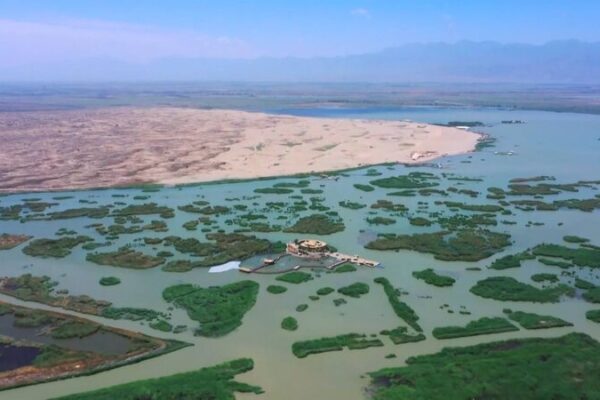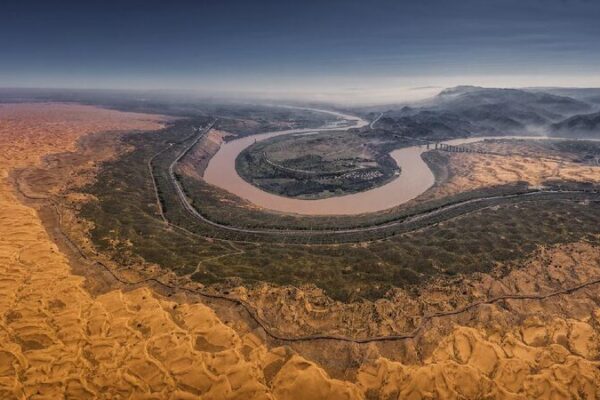Where the vast Tengger Desert once threatened to swallow farmland and homes, Shapotou in northwest China’s Zhongwei City stands as a testament to human resilience. Nestled where the desert meets the Yellow River, this region faced relentless sandstorms that jeopardized local livelihoods.
But the tides turned when local communities rallied to combat the advancing sands. Employing innovative techniques like the “straw checkerboard barrier” and sand-fixing systems, they halted the desert’s relentless push. Over several decades, Zhongwei has reclaimed approximately 1.5 million mu (about 100,000 hectares) of desert through afforestation efforts.
This massive endeavor didn’t just stop the desert; it reversed it. Vegetation coverage expanded from less than 1% to an impressive 42%, pushing back the Tengger Desert by 25 kilometers. Shapotou now thrives with greenery, a stark contrast to its once barren landscape.
Shapotou’s transformation is part of a broader movement as the world unites to combat desertification. With events like the upcoming 16th Conference of the Parties (COP16) to the United Nations Convention to Combat Desertification in Riyadh, global attention is fixed on sustainable solutions. China’s success in Shapotou offers hope and a model for other regions facing similar challenges.
Reference(s):
cgtn.com








